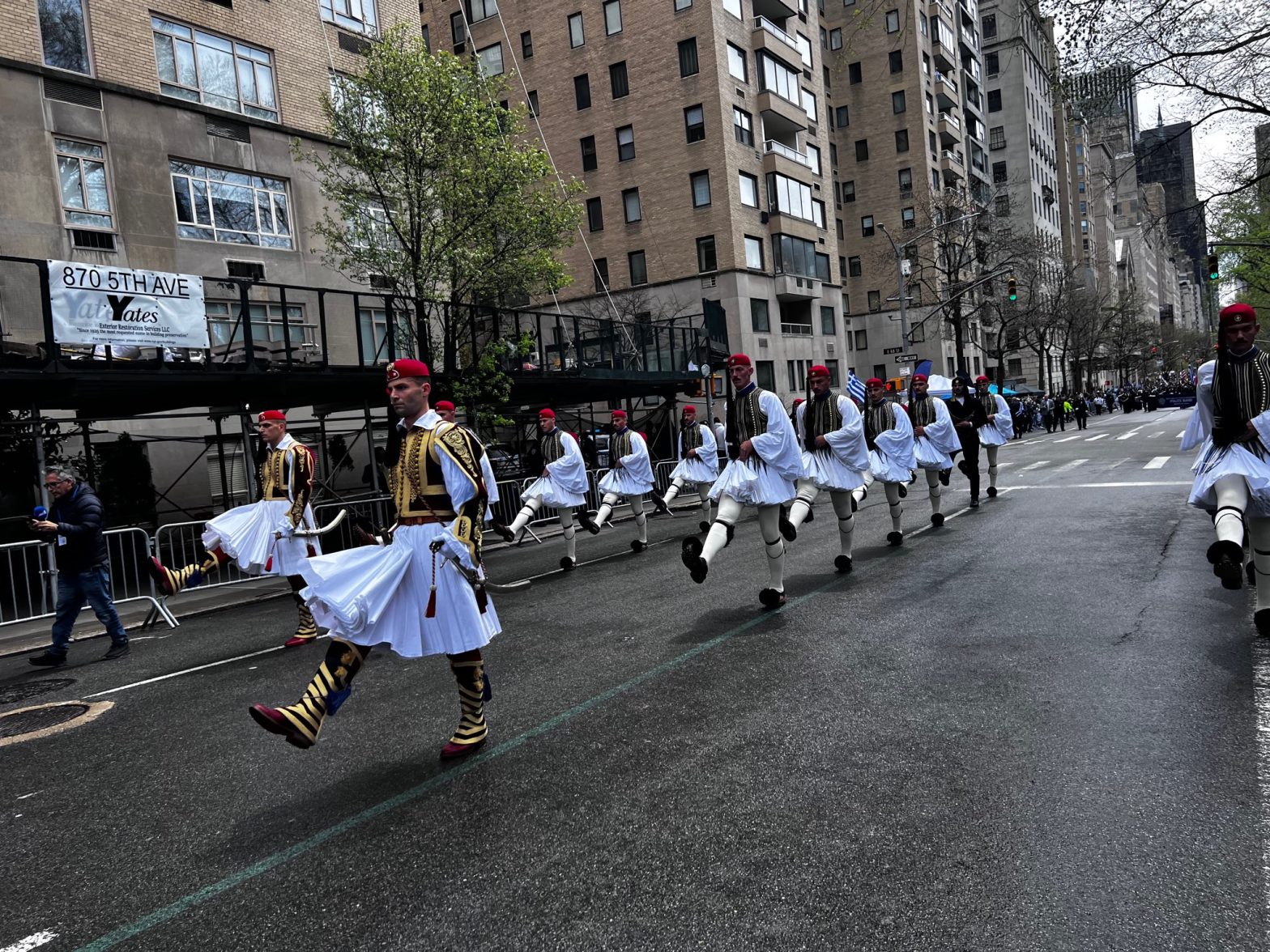General News
Meropi Kyriacou Honored as TNH Educator of the Year
NEW YORK – Meropi Kyriacou, the new Principal of The Cathedral School in Manhattan, was honored as The National Herald’s Educator of the Year.

Most probably, human beings have been chewing natural gum from trees or bushes much earlier than the period from which we have written evidence. We find the earliest references to mastic in Orphic Hymns andthe texts of Theophrastus, who was a botanist and philosopher of Classical times. “There are also the juices from which come frankincense and myrrh; for these too are gums;… and a similar substance forms on schinos and the spinous plant called ixine, from both mastic-gum [mastihe] is made.” (Plants History IX 1.2).
Mastic is the resin from schinos bush, Pistacia lentiscus var. chia, that grows on Chios island, a member of the tree family thatincludes pistachio and terebinth trees. Mastiha, the crystallized “tears” of mastic bushes, belongs to the resin group.The croping procedures from aromatic resin producing bushes are described in Theophrastus work.
The most known resins, frankincense and myrrh, also mentioned by Theophrastus, are the gifts the Three Kings (wise men) gave to humanity, along with gold, which indicates their great worth and value. Theophrastus mentions that “the pure balsam resin [of Syria] sells for twice its weight in silver.” We know that during the Ottoman rule on Chios, mastic was worth its weight in gold. The external wall line of the mastichochoria of Chios houses formed high walls,without openings at street level, fortifying thus the mastic producing villages. In order to save the precious “tears” from invaders these villages were entered only by ladders.
By order of the sultan the penalty for stealing mastic was execution. In the Ottoman harem and still in the traditional Turkish cuisine mastic is widely used in desserts such as Turkish delight (lokum) and ice cream (dondurma), in puddings such as sutlac, in salep and in soft drinks. Turkish coffee is also sometimes flavored with mastic. In the sultan’s harems mastic was highly valued as a breath freshener and a tooth whitener. Mastic was then so precious that during the 1822 Chios Massacre, when52.000 Chios’ inhabitants were massacred and 50000 enslaved as a revenge for the Greek Revolution, the people of the Mastichochoria region were spared by the sultan, because they provided mastic. The Turkish name for the island of Chios, Sakiz Adasi, means “island of gum.”
Another legend that highlights the value of mastic refers to a fruitless trip of Christopher Columbus. Returning from this trip to Cuba, Columbus brought to the Queen of Spain a mastic bush, saying that he it found there, along with rare spices and exotic trees. Chios at that time was under the Genovese rule. Columbus, being a Genovese, knew the bush, the production procedure of mastic as well as its value, as he had visited Chios island in the past. By this trick, he tried to add value to his fruitless trip with the aim to persuade the Queen to continue funding him.
In Byzantine times mastic trade was the emperor’s monopoly, and brought the sap to every corner of the Empire. Mastic was used in Arab medicinal recipes for its digestive properties, in English aristocracy drinks, in Christian and Muslim incenses.
Today in Greece mastic flavors bread,kaimaki ice cream and the traditional ypovrichio (submarine) spoon sweet. Recently high-quality mastic liquors and distillers are produced. Mastic drinks existed in antiquity as well. We read the first mastic drink recipe in Marcus Gaius’ Roman Cookbook. The drink was made of wine, honey, pepper, laurel leaves, saffron, and mastic. All ingredients were boiled together and the drink was served either cold or warm. Roman emperors used mastic along with honey, pepper, and egg in the spiced wine conditum paradoxum.
The word mastic comes from the ancient Greek verb “mastichao,” which means to chew. The name suggests that mastic trees resin has been used as chewing gum. The first reference to mastic “tears” was by Hippocrates, who used mastic for the prevention of digestive problems, of colds and as a breath freshener. Dioscurides, the first-century Greek physician, refers to the healing properties of mastic in his book De Materia Medica. Galenus mentions that mastic is useful for bronchitis and for improving the condition of the blood.
Mastic contains antioxidants and has antibacterial and antifungal properties. Recent studies have shown that it can cure peptic ulcers by killing helicobacter pylori bacteria and that high consumption of Chios mastic powder results in decreased levels of total serum cholesterol, LDL, total cholesterol/HDL ratio. Chewing mastic reduces oral bacteria and has some value in preventing tooth decay and gingivitis.
The knowhow of the production of Chios mastic is considered, since 2014, an Intangible Cultural Heritage of Humanity and is protected by UNESCO.
A lot of people like chewing gums. It’s better to choose the natural and healthier Chios gum than the artificial ones.
NEW YORK – Meropi Kyriacou, the new Principal of The Cathedral School in Manhattan, was honored as The National Herald’s Educator of the Year.

NEW YORK – The New York Greek Independence Parade on Fifth Avenue, commemorating the 203rd anniversary of the Greek Revolution of 1821, was held in an atmosphere of emotion and pride on April 14.
CHICAGO – The National Hellenic Museum (NHM) presents the Trial of Pericles on Wednesday, April 17, 7 PM, at the Harris Theater, 205 East Randolph Street in Chicago.
NICOSIA - Cyprus - home to United Kingdom military bases where fighter jets were used to help defend Israel from an Iranian attack using missiles and drones - has stepped up security on the island amid fears the Middle East conflict could worsen.
A plot of land for sale in Tripoli, Arkadia Prefecture, 268.
ATHENS - Expecting another record year in tourism to surpass the numbers in 2023 in arrivals and revenues, Greece’s infrastructure - particularly on overwhelmed islands - isn’t adequate to deal with the demands even as more resorts keep opening.